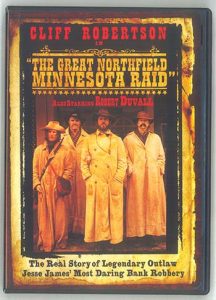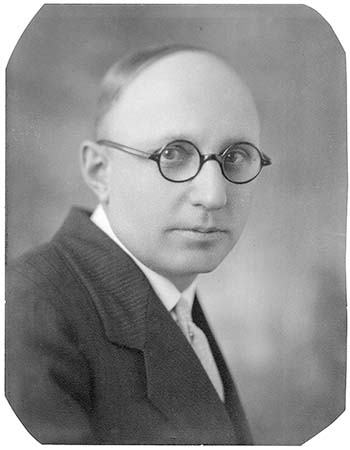
What memories do you have of the Tilt-A-Whirl? I think almost everyone has a memory of the first spinning, dipping, dizzying, dazzling ride on that familiar staple of amusement parks, state and county fairs and carnivals. If you live in Faribault, you can also lay claim to being where the Tilt-A-Whirl was invented and you may have had personal associations with Sellner Manufacturing Company, which produced the ride from its inception in 1926 until 2011.
Herbert W. Sellner (1887-1930) developed the first Tilt-A-Whirl amusement ride in Faribault in 1926 and founded Sellner Manufacturing Co., which produced the iconic ride and many others until 2011. Courtesy of the Rice County Historical Society.
According to Sellner family lore, Herbert Sellner came up with the idea for the Tilt-A-Whirl at his kitchen table. He put casters on a dining room chair, put the chair with Arthur on it on top of the table and then lifted one side of the table and then the other, causing the chair to roll back and forth. A possible name “Tiltalator” was considered for the model he constructed in early 1926 but the name was changed to “Tilt-A-Whirl” in the course of patenting.
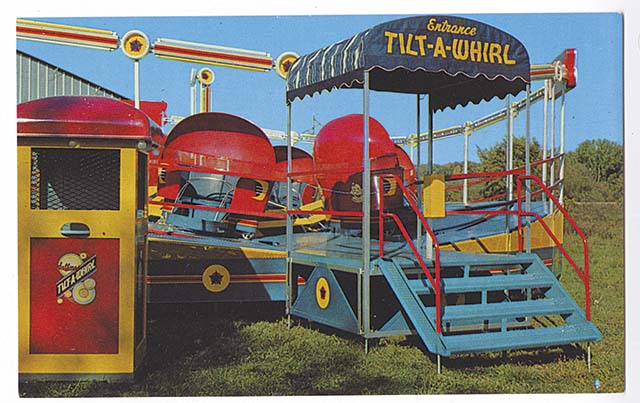
The Sellner family saga in America started with Herbert’s parents, Friedrich Heinrich Sellner and his wife, Charlotte Lueck Sellner, who immigrated to the U.S. from Germany in 1881. The 24-year-old Friedrich found his woodcrafting skills in demand for making cabinets and carving furniture designs at a furniture and lumber business in Wabasha (Luger Brothers). Within a few years the couple moved to Faribault. where he worked at what became the Faribault Furniture Factory and where Herbert Walter Sellner was born Feb. 5, 1887, one of nine children.
Herbert Sellner’s Ideal Lamp Mfg. Courtesy of the Rice County Historical Society.
Herbert Sellner’s Ideal Lamp Mfg. business produced mission-style lamps and then wooden toys during World War I. Sellner used his son Arthur in this ad for the Joymobile car for kids. Courtesy of the Rice County Historical Society.
Young Herbert Sellner inherited his father’s skills and expanded on them. According to a history prepared for the 70th anniversary of Sellner Mfg. Co. in 1996, Sellner founded Ideal Lamp Mfg. on June 1, 1914, producing mission style lamps with colorful stained glass shades, along with tables, chairs and then wooden toys during the shortages of lead during World War I. Herbert produced a three-wheeled sled called a Coaster and used his son Arthur in advertising for the Joymobile car for kids. This business closed in May of 1919.
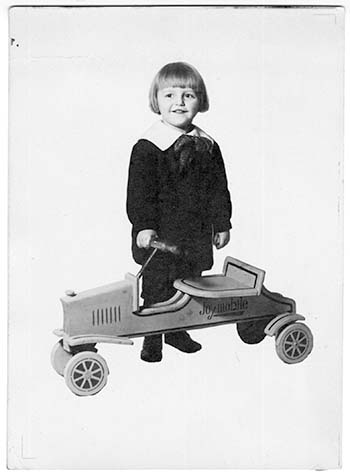
Herbert Sellner experimented on early entertainment devices in a shop in the back yard of the family home at 124 3rd Ave. E. He began to produce beach equipment, including diving platforms, huge wooden water toboggan slides and water wheels designed to propel people into the water. His inventions found immediate success. A Dec. 17, 1923, promotional brochure touted the “Patented water toboggan slide that is quite the rage at summer resorts. Its business last year, while introducing the slide, ran to $40,000 and will be more the coming summer.” There were pictures of people frolicking on and around the slide in Seattle, New York, Jamaica, Switzerland, France and Denmark with the caption “Just picture the profit!” At 50 cents per hour per toboggan, 12 toboggans would turn in $6 every hour, for an “inexpensive investment, way under a thousand dollars.”
One invention did not work out so well but may have helped spark the idea for the Tilt-A-Whirl, along with rolling his son on a table. Sellner tested a water merry-go-round in nearby Roberd’s Lake. A string of motor boats chained together went around in a circle, each boat rocked by the wake of the other boats. This invention was destroyed when a storm wrecked it in 1925.
The first Tilt-A-Whirl was built in his back yard and a neighbor’s barn and may have been completely erected on land on Mott Avenue near Teepee Tonka Park. Construction of a factory began at 515 Fowler St. in September of 1926 to ramp up production for this and other inventions. On March 26, 1927, Sellner Mfg. Co. was incorporated. (Herbert’s brother Martin Sellner was general manager until his retirement in 1961.) It is said that over the next year the first 14 Tilt-A-Whirls were built in Herbert’s basement and yard.
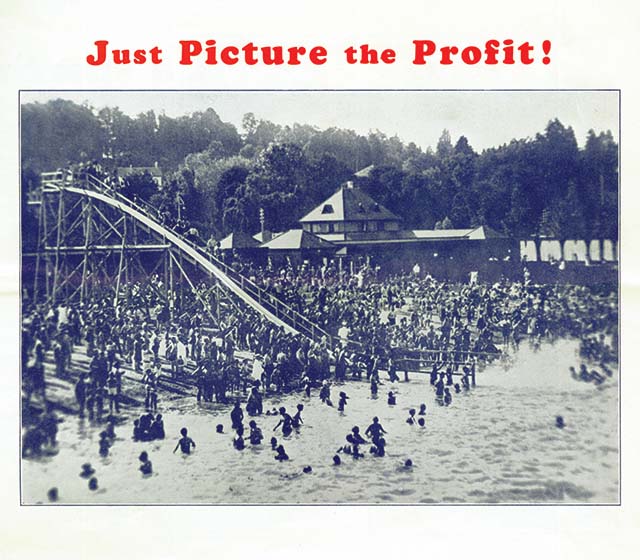
glide up to 100 feet across the water.
Although it has been printed that the Tilt-A-Whirl was first run at the Rice County Fair and at the Minnesota State Fair of 1926, that is hard to verify. The Rice County Fair which was held in Northfield lists only a Ferris wheel and merry-go-round in its ads. Some sources say the ride made its debut at the Minnesota State Fair of 1927, but the Rice County Historical Society has a flier from the Wildwood Amusement Park of White Bear Lake touting its “Mysterious Sensation Tilt-A-Wheel” (sic), dated May 25, 1927. And a Sellner Co. 1938 brochure says the original Tilt-A-Whirl was built by Herbert Sellner for Wildwood Park near St. Paul.


What excitement this “mysterious sensation” must have brought to the 20-acre Wildwood Park on the south shore of White Bear Lake in 1927! The Twin Cities Rapid Transit Co. acquired the streetcar line to this park in 1889 and soon Twin Cities residents were flocking to the park, paying the 10 to 15 cent fare for the 45-minute trip to its many attractions. A 500-foot roller coaster and a roller rink were added in 1892. There was a dance pavilion (featuring names such as Guy Lombardo), swimming, boating and picnic areas, amusement rides and carnival games. As many as a thousand people a day visited the park on weekends and tried out this new ride from Faribault’s Sellner Company. (The park, which closed in 1932, also had a Sellner water toboggan slide.)
In 1928, Sellner Mfg. produced the Swooper ride and 45,000 square feet in the factory was devoted to making both the Tilt-A-Whirl and the Swooper. The “perfected and remedied” Swooper was shown in a 1930 brochure which described the action: “glide back, swoop upward, glide forward, swoop downward. Swoop into the air at about three times the speed of the straight-away.” There were four speed changes every round.

Company founder Herbert Sellner died of anemia at the young age of 43 on April 22, 1930, but Herbert’s sons Walter and Arthur and brother Martin were continuing the family tradition. (Martin was general manager until his retirement in 1961.) The company made it through the steel shortage of World War II by securing government contracts to make parts for munitions and toolkits for the Navy, according to the paper prepared for the 70th anniversary of the company in 1996. Arthur succeeded his uncle Martin as general manager and when Arthur retired in 1976, Arthur’s son Bruce became president.
Bruce Sellner (born Aug. 30, 1951) was as inventive as his grandfather Herbert. One morning, around three a.m., he woke up his wife Tovah and daughter Erin to show them a notebook full of doodles which would turn into a line of Spin Rides. The first was Spin-the-Apple in 1987. Berry-Go-Round, Barrel-of-Fun and Bear Affair followed and the company went on to produce many more. Rides such as these provided more affordable equipment options for customers and variety in the offerings.
On Sept. 10, 1994, Bruce Sellner cut the ribbon on a new addition which expanded Sellner Mfg. Co. by about 40 percent in anticipation of producing a sailboat ride called Anchors Away. On June 16, 1995, the Faribault Area Chamber of Commerce named Sellner Mfg. Co. with its 40 employees as Business of the Year.
But much sadness followed when Arthur died just two weeks later on June 30 at the age of 80. Then, just a couple months after that, his son Bruce died Sept. 4 at the age of 44 while waiting for a heart/lung transplant after years of battling two auto-immune diseases. His newly designed hang glider ride, the Windjammer, was about to make its debut in Florida.
Carolyn Heskett, the company sales manager, said in his obituary in the Faribault Daily News of Sept. 6, 1995, that “Bruce was most proud of the growth in the company he helped orchestrate these past ten years, resulting in the recent expansion of the manufacturing area.” She also said, “He always had time for people…Everyone who knew him loved him.”
Bruce’s wife, Tovah, became majority owner of the company and chair of the company’s board of directors and their daughter Erin, at age 24, became president of the company she had worked for since the age of 14 when she started in the electrical shop. Through high school she moved to the parts department and eventually into the office for customer service as she learned the business from the ground up.
Just before the New York 9/11 terrorist attack, an Aug. 31, 2001, story in the Star Tribune was titled, “It’s Been a Tilting, Whirling Ride for 75 Years.” It reported that Sellner Mfg. had produced more than 1,000 Tilt-A-Whirls with more than 600 still operating, including some from the 1940s and 1950s.
Tilt-A-Whirls were so durable that the company provided mostly parts and maintenance repairs to its signature ride, selling only a few each year. As an example of its durability, the Tilt-A-Whirl at the Steele County Fair, owned by three generations of the Merriam family, was built by Sellner in 1947.
In the wake of 9/11, times got more difficult, with the economic slump, higher fuel prices and increase in the cost of materials affecting the amusement industry. After another tragedy, Hurricane Katrina in 2007, Sellner Mfg. sent out a Mardi Gras themed Tilt-A-Whirl to New Orleans when their ride was destroyed in New Orleans City Park. Also in 2007, the company was diversifying to screen-printed and embroidered apparel and accessories of the Sellner Sign Factory. They had also started making portable stages.

Bruce Sellner took over Sellner Mfg. Co. when his father Arthur retired in 1976. Bruce created a popular line of spin rides before his death at the age of 44 in 1995, just months after his father’s death at 80. “The average employee at Sellner had worked for the company more than 15 years. Every department, welders, painters, fiberglass, electrical, tech support and office staff, felt a great pride in building ‘America’s Favorite Family Amusement rides’ – right here where it all began in Faribault, Minn., USA.” Erin Sellner in Faribault Daily News, Jan. 8, 2011. Photo courtesy of the Sellner family.
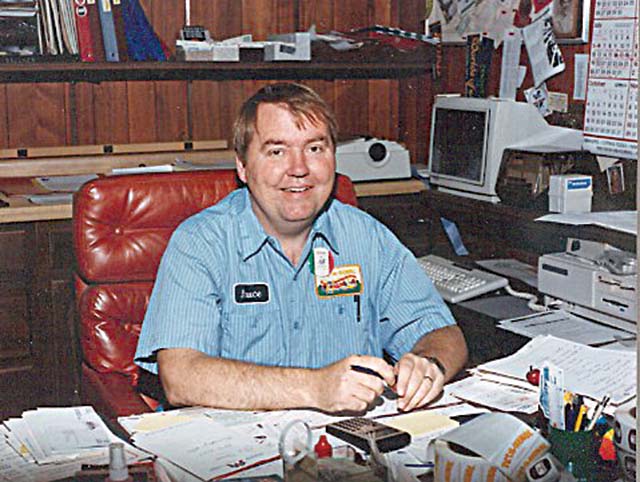
In March of 2007, 52 kindergarten students from Jefferson Elementary School in Faribault wrote a letter to the legislators asking that the Tilt-A-Whirl be made the state’s official amusement ride. Minnesota has a state muffin (blueberry) and a state butterfly (monarch), but the bill which State Rep. Patti Fritz introduced was not given a hearing and so did not progress.
On June 27, 2008, the Faribault Daily News noted that Sellner Manufacturing Co. had 26 employees, down from a peak of 60 in 1996. When it became evident that the business would have to be sold, the Sellners were hoping to keep the manufacturing in the United States. That was successful when Larson International of Plainview, Texas, purchased Sellner Mfg. in January of 2011. The Larson International president Jeff Novotny said, “Out of respect for the long history of this company and the family, and because of wide industry recognition of the Sellner product, I intend to keep and use the Sellner name.”

What has made the Tilt-A-Whirl so popular? Orders came pouring in for it from the beginning. Perhaps it is because one ride in it is never like another, unlike the Ferris wheel and merry-go-round which both go round and round and the roller coaster which has a set course. Mathematicians would call the unpredictability in the Tilt-A-Whirl “chaotic motion,” where even the weight of the passengers can affect what happens. Herbert Sellner himself pegged its attraction in his patent text: “A further object is to provide amusement apparatus wherein the riders will be moved in general through an orbit and will unexpectedly swing, snap from side to side or rotate without in any way being able to figure what movement may next take place in the car.” Then there is the family appeal: A brochure from 1928 declared “It’s as safe as Grandma’s Rocker.” And, indeed, grandparents continue to share their affinity for the ride with grandchildren today, though there have been some changes. The early wood Tilt-A-Whirls, powered by gas motors, had nine cars and today there are seven cars made of steel, aluminum and fiberglass. powered by electric motors.
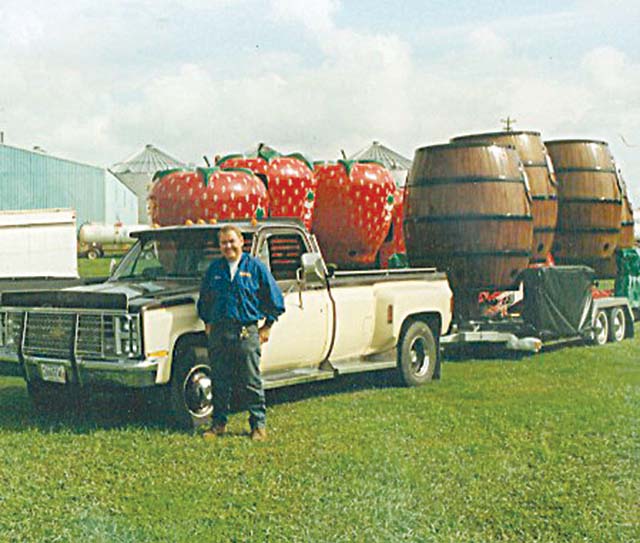
The Tilt-A-Whirl is certainly an iconic part of American culture. Just look at some of the Tilt-A-Whirl references I came up with: Bluesmaster Jimmie Vaughn and the Tilt-A-Whirl band played at the Dakota Jazz Club in Minneapolis on March 24 of this year; Insane Clown Posse hip hop duo has donned face paint in a video and sings, “Think about your every sin as our tilta-a-whirly spins;” the book Tilt-A-Whirl by Chris Graberstein features a billionaire real estate tycoon who is found murdered on a Tilt-A-Whirl at a seedy amusement park in New Jersey; in a 1985 science-fiction fantasy, Ethan Hawke and River Phoenix build a homemade spacecraft out of an old Tilt-A-Whirl car before “embarking on an adventure into space in search of alien life where they discover that things are not always as they seem;” last month, a model of a Tilt-A-Whirl made of Legos was on display at the Denver Comic Con Convention. And on Ebay, you can buy a “vintage promotional 1950s Tilt-A-Whirl booklet” for only $114.99 (the Rice County Historical Society passed on this one).
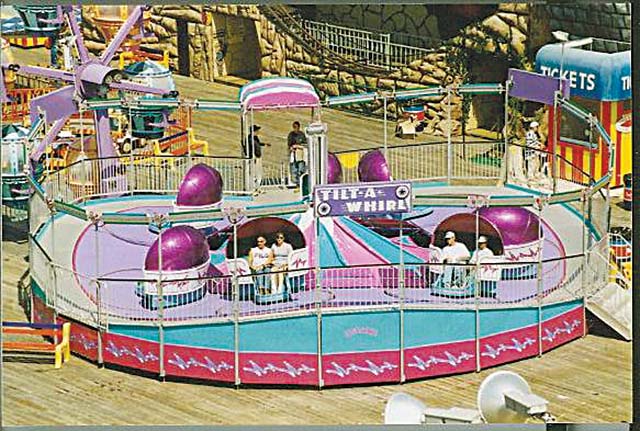
And you can purchase a Tilt-A-Whirl, if you have the money, say $250,000. Self-made millionaire Jerry Rich did so with the Sellner company in the mid-1990s. Rich, who got rich making software to help computerize stock markets, has a private golf course and country club near Sugar Grove, Illinois. He also has a collection of 90 rare and antique autos, along with the Tilt-A-Whirl he bought for his wife Betty.
Erin Sellner provided me with the following statement, which seems to be a fitting way to conclude this “Historic Happenings” column:
“It can be a source of local pride that for 84 years the Tilt-A-Whirl, and the replacement parts to keep them all going, were manufactured here in Faribault. It is also a salute to American ingenuity, starting with my great-grandfather Herbert Sellner, who devised the first one in 1926. Over the years Sellner Manufacturing Company employed hundreds of very talented people in our community. Their hands shaped metal, wood and eventually fiberglass into wonderful contraptions that delighted decades of families.”
Thanks to the Sellner family and Susan Garwood, Executive Director of the Rice County Historical Society, for photos and information.
Tilt-A-Whirl Car Has Star Turn on History Channel

Tami Schluter, co-owner of the Historic Hutchinson House Bed and Breakfast at 305 2nd St. N.W. in Faribault, has a strong feeling that the Tilt-A-Whirl should be as iconic a representation of Faribault as Paul Bunyan and Babe the Blue Ox are for Bemidji, Spam is for Austin or, for that matter, the World’s Largest Twine Ball is for Darwin, Minn. After all, if you ask anyone from out of town if they have heard of the Tilt-A-Whirl, the answer most likely is yes. However, few outsiders know that the ride was invented and made in Faribault by Sellner Mfg. Co. from 1926-2011.
But that is about to change, due to Schluter’s initiative with the History Channel’s American Restoration show and community support of her efforts. Unless there is a schedule change, on July 3 at 9:30 pm, Rick Dale and his crew of self-described “loose screws” at Rick’s Restoration in Las Vegas will unveil a refurbished Tilt-A-Whirl car, which is destined to become a tourist attraction in downtown Faribault.
How did this come about? Schluter told me there has been talk for years about branding Faribault, a town which can be identified with such things as the woolen mill, cheese cave, even a Heisman trophy winner – and the Tilt-A-Whirl. This ride, Schluter said, conjures up memories for almost everyone, including “Oh, yeah, I got my first kiss on it!” or even “That’s the first ride I got sick on!”
Schluter heard from Peggy Keilen (co-owner of Faribo Air Conditioning and Heating) that her scrap dealer, Gary Pettipiece of Harley’s Auto Salvage and Recycling, had some Tilt-A-Whirl cars in the back lot from the Sellner company. Schluter stopped by one day and, undeterred by high weeds, checked out the three cars, which were prototypes with missing covers or hoods (called bonnets). Pettipiece told her that his late father had always wanted to refurbish one of the cars for his children. He was willing to give the cars up on the conditions that they would be refurbished, placed in downtown Faribault and never sold for profit. Schluter agreed.
That evening, Schluter and her husband, Doug, were watching American Restoration on the History Channel and she jokingly said, “Wouldn’t it be cool if we could get American Restoration interested in this project?” Doug encouraged her to do so, and she sent off an e-mail to the show’s producer that night. The next morning, Nov. 22, 2013, she found a voice mail from the program, asking her to call back and within days heard “We want this project.”
There was a catch: They had to get a Tilt-A-Whirl car to Las Vegas and pay for the restoration. The only payback is publicity, the chance to let a national audience know about Faribault and its historic Tilt-A-Whirl business. Fortunately, Schluter was able to get a “fabulous deal” from Faribault’s McDonough Truck Line to ship the car out to Las Vegas on a truck en route to San Diego. The Schluters then flew to Las Vegas on Jan. 24 for the reality show.
The filming started with, “Hey, Rick, the customer’s here with a piece she wants refurbished!” The car was then brought in on a forklift and the estimate for restoration was given as $8500. It would be necessary to raise half the money before refurbishment would even start, if they accepted that option.

Schluter and Keilen quickly started fundraising at home, getting needed publicity with a story in the Faribault Daily News by Managing Editor Jaci Smith on Feb. 18. A donor stepped up right away with an offer of $3000, if that sum could be matched by March 1, which it was, with checks of all sizes. Lowell and Flavia Berg sent in a check for $2250 because of their fondness for fairs and for having been volunteers at state fairs over the years. The Faribault Foundation agreed to take the funds in so it would be tax-deductible. The check was sent out on March 2 and work began right away. The Schluters and Peggy and Bill Keilen flew to Las Vegas for “the reveal” on April 21.
Schluter signed a confidentiality agreement so can’t say much more but she did know the restored car would not have the solid bonnet, which would be too expensive to fabricate. Instead, Gold Star’s Mike Featherston (in the former Sellner building at 515 Fowler Street) found an original mesh bonnet, gave her yet another “fabulous deal” and, Schluter said, “shipped it out to Las Vegas on his own dime” in March. (Early on, Sellner Mfg. replaced the original mesh bonnet because in the course of people being tossed about, long hair could get caught in the mesh, people were getting their fingers cut or broken grabbing for the mesh and it was not easy to clean if someone “lost his or her lunch” riding in the car.)
The colors of the car will also be the familiar red and blue with a yellow seat, which former Sellner Mfg. employees recommended to Schluter. And former employee Karen Bussert of Design Specialties provided an original graphic of a clown for the car. Schluter says the restored car, which is in Faribault in a secret location until after the program, is now valued at $18,000.
Mill City Restaurant and Sports Bar (formerly Boston’s), at 125 1st Ave. N.E. in Faribault, is hosting a premiere party during the airing of the show 9-10 pm on July 3, with all televisions turned to the History Channel. Drink specials called “The Tilt-A-Whirl” will be offered.
On May 27, the Faribault City Council’s joint committee approved the placement of this restored Tilt-A-Whirl on the corner of 128 Central Ave. N., in front of Burkhartzmeyer Shoes. The installation date has not yet been determined.
There are two more cars to be restored. Tax-deductible donations may be sent payable to the Faribault Foundation at Reliance Bank, 2300 N.W. 30th St., Faribault, Mn. 55021, with Tilt-A-Whirl notation on checks.



